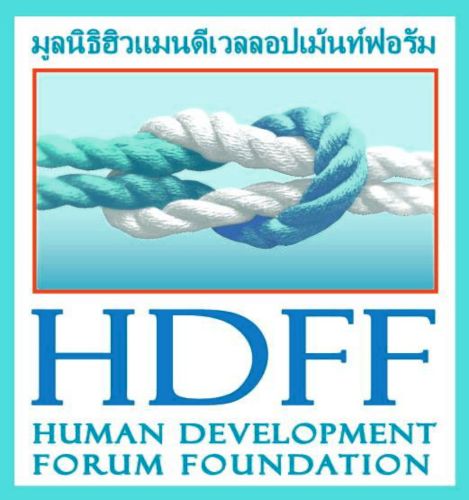A cooperation project between
The Human Development Forum Foundation and
The Thailand Research Fund 2010
During the next 10 years, ASEAN will strive to meet its vision enunciated in its ASEAN Vision 2020 creating a grouping that is, “outward looking, living in peace, stability and prosperity, bonded together in partnership in dynamic development and in a community of caring society.” To meet this goal, a number of mechanisms and platforms have been created to promote the 3 pillars of ASEAN: Security, Economic, and Socio-Cultural Communities. At the forefront of these efforts is its attempt to formalize the ASEAN Economic community. During its 2003 meeting, the ASEAN Heads of State signed the “Declaration of ASEAN Concord II” moving forward the implementation of the Economic Community pillar from 2015 to 2010.
Therefore, ASEAN has accelerated its integration practice, establishing a number of mechanisms to implement its economic integration commitment including the ASEAN Free Trade Area and the Framework Agreement on Services, and Investment Area. Its overall goal to create a single market and production base requires liberalization of markets and services, but also mechanisms for the free flow of labor and investment. Since January 2010 the AFTA regulations are easing the way for more direct investment between the member states as well as lowering the tariffs for several groups of goods. These new regulations will also creating a more liberalized market for land. This will cause different economic and social impacts on the land use in ASEAN member countries, especially as for most developing countries the land issue is much more important and socially significant because the primary sector normally contributes a much bigger part to the national income compared to industrial countries. Therefore a transition period with a step by step adjustment can be a reasonable option, especially among AFTA participants. A crucial condition however is, that such adjustment arrangements support the long-term integration and do not serve as a tool of ongoing protectionism.
Against this backdrop and the strong research capacity of HDFF the Thai Research Fund (TRF) and HDFF started in August 2010 a cooperation project on a study titled “The ASEAN Free Trade Area and its Social Implications for the Kingdom of Thailand related to Land Rights”.
The objectives of the study are
• To examine what the AFTA may mean for land rights and land use in SEA, but specifically Thailand
• To issue recommendations for social provisions in line with international standards.
• To provide lessons learned from other FTAs, including European Integration and North American Free Trade Agreement (NAFTA) as well as integrate inputs from investors and social groups
Target groups for the study are
• Ministry of Interior
• Ministry of Foreign Affairs
• Interested Parties (investors, land owners, social groups etc.)
The research project will:
1) Examine AFTA side effects, notably land rights and land use
2) Help plan social / legal policy
3) Provide opportunities for external inputs (investors, land owners etc.)
What you can do?
Support the study with your ideas on
- how the liberalization of the respective land rights should be done for Thailand and the other ASEAN countries
- what are your experiences referring to land use and FDI in Thailand and other ASEAN countries related to major obstacles and / or benefits
- share your opinion/information with us
Contact for further inquiry:
Dr. Wilfried A. Herrmann ( herrmann@hdff.or.th) or Mr. Thomas Collein (collein@hdff.or.th )
We need your input and ideas !!


Comments are closed